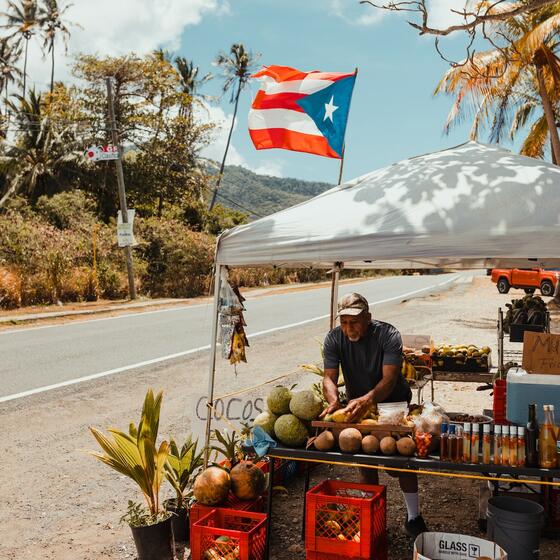Finca Gaia’s Manuel Baez gives us the lowdown on Puerto Rico’s agricultural renaissance, from the must-visit farms planting indigenous crops to the restaurants rethinking island ingredients.
15 September, 2022
In partnership with
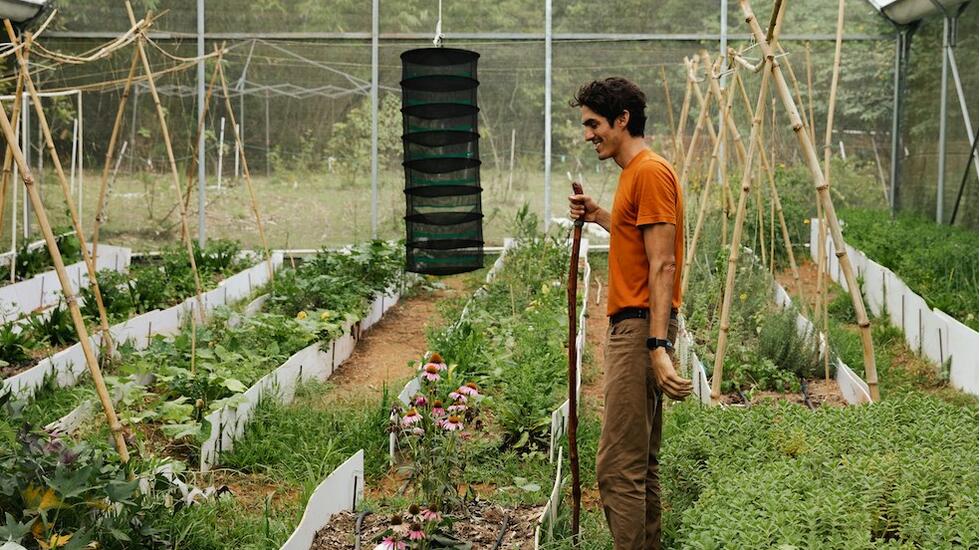
Fertile,
lush and blessed with a balmy climate year-round,
Puerto Rico is a place you’d expect to be
farmers’ market central. Yet, surprisingly, the Caribbean island’s
farm-to-fork movement is only just getting started. From San Juan’s
acclaimed Cocina Abierta restaurant to the hands-on agrotourism
experiences on offer at El Pretexto, a new generation of chefs,
growers and activists is switching up the status quo and putting
Puerto Rican-grown produce front and centre.
We sat down with Manuel Baez, head of conservation and education
at the farm and ecology project Finca Gaia, to
hear more about the green shoots of the island’s farm-to-fork scene
and get his hot tips on where to try Puerto Rico’s incredible
homegrown produce.
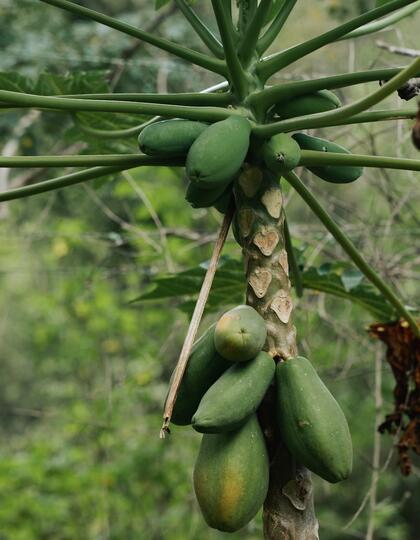
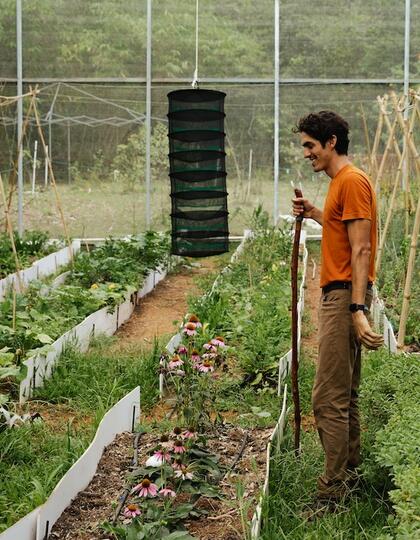
Island fruit, left, and Baez at Finca Gaia. | Photo credit:
Joe Howard
Finca Gaia was founded by my parents, Ana Perez and Manuel Baez
Sr. It started when my mom visited a piece of land in Dorado, just
west of the island’s capital, San Juan. The area belonged to my
grandfather but had been abandoned for 70 years. She saw something
no one else did, and convinced the family to start planting a few
fruit trees there. To cut a long story short, she cherished the
land, and encouraged me and my brothers to fall in love with the
place, too. Now we want to share it with the rest of the world.
It’s a small, unspoilt, natural, peaceful piece of land where you
can connect with nature and, in the process, learn so much. We grow
produce and offer personalised tours and experiences.
Finca Gaia has 14 hectares in total, but we only plant and grow
on around one-and-a-half hectares. The rest is dedicated
conservation land. We’ve planted just over 100 fruit trees in the
growing area, including native, endemic and exotic species. Some of
the fruit I’d never seen or tasted before. Our main crop, though,
is avocado, of which we have around 14 different varieties. Our
growing is inspired by permaculture practice – we are experimenting
a lot, trying different and new ways to produce a food forest.
Right now, our jackfruits are ripe and so tasty.
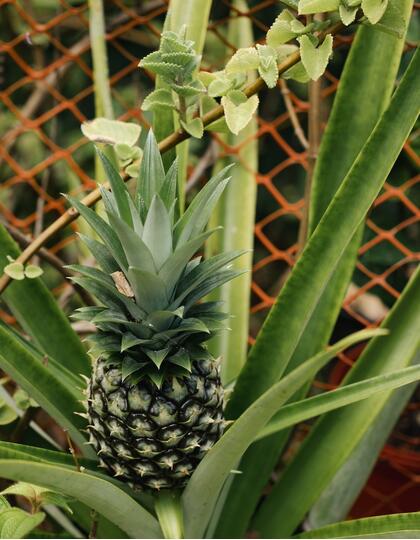
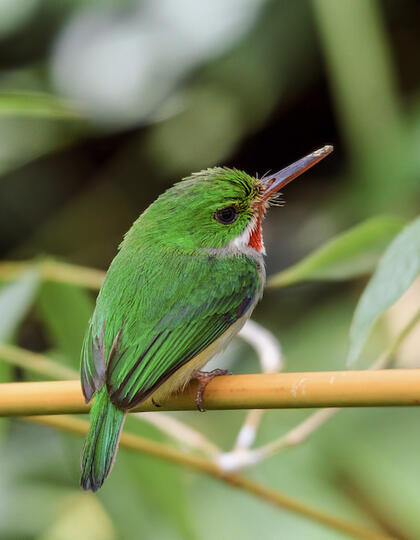
Pineapple ready to be harvested, left, and a Puerto Rican
Tody bird. | Photo credit: Joe Howard
Puerto Rico went through a time, not long ago, when people
stopped working the fields and kind of abandoned agriculture. Since
then, most of the products we consume are imported. That’s mad, as
we can grow almost anything on the island, thanks to rich soils and
diverse ecosystems. A new generation is seeking to relearn and
rediscover the knowledge of the land that our grandfathers had.
There seems to be a need to go back to the earth and grow our own
food. It’s not easy to make a living from it, but we wanted to
think beyond profits and ensure what we were doing was harmonious
with our surroundings.
Back in the 1950s and 1960s, close to 95 per cent of the island
was deforested. There are more than 500 different species of
natives trees on Puerto Rico but, due to the deforestation, some
are in danger of becoming extinct. When we found a number of these
endangered trees on our land, we were surprised. Now we’re
searching for and planting other endemic species, too. These past
seven years we’ve learned so much from our surroundings, and
continue to do so every day. Visit the finca and you’ll learn all
about our efforts, as well as the species of native and endemic
birds, reptiles, amphibians and insects living between the trees.
One of my favourite trees is the retama San José – I call it the
Puerto Rican cherry blossom.
We’re just a 25-minute drive from San Juan, near the city of
Dorado, which is known for its beautiful beaches. The farm is
hidden in the “mogotes”, limestone hills, just outside the city.
The beautiful karst formations run all along the north coast; Las
Cuevas del Río Camuy is a must-visit.
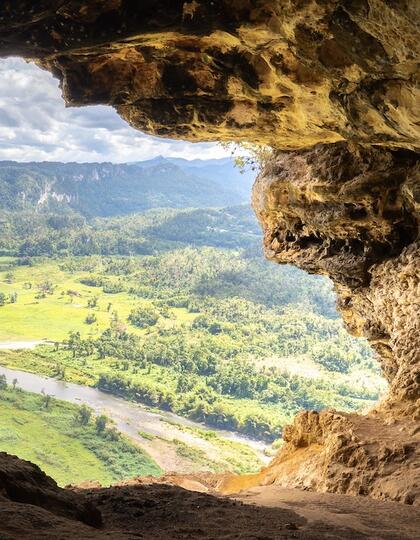
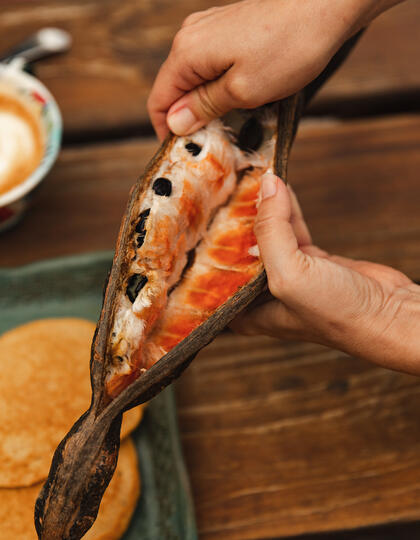
A naturally-formed window in a limestone cave, left, and
fresh Puerto Rican produce. | Photo credit: Joe Howard
A lot of the island’s up-and-coming chefs are proud to support
local farmers. They know that the quality of the food we grow has
no comparison, and it shows in their dishes. Yumbootik
is a new concept focused on international cuisine mixed with local
flavours, and it uses produce from Finca Gaia, as well as other
local producers. The menu is inspired by the travels of its chef,
Jonathan Cruz.
The Italian next door to Yumbootik, Bocca, is also
great. The pizzas are to die for. And Berlingeri Cocina Artesanal is the best spot for vegan
food – it supports a number of local farmers, including us, and the
food is brilliant.
Try the Placita de Santurce neighbourhood of San Juan. There are
also pop-up markets most weekends in city plazas across the
island.
There are so many awesome agroturism projects happening right
now. For a sense of the movement, check out the work of Hacienda Plenitud, Casa Pueblo, Frutos del
Guacabo, Amasar and El Josco Bravo. Most places offer tours, and
you can even stay and volunteer at a few.
Engage with the locals. A lot of the treasures we have on the
island, you won’t find advertised and are only known by residents.
Puerto Ricans are super-hospitable people and we will gladly share
our knowledge with visitors seeking to enjoy the island.
I think a good local pitorro (moonshine rum) would be the
easiest to transport back, along with locally grown, harvested and
roasted coffee beans. Or perhaps some cacao. We have local cacao
farms producing amazing chocolates. Honestly, there’s so much I
could suggest – I just hope island visitors have time to try it all
and pick up what they’ve most enjoyed to take back home.
